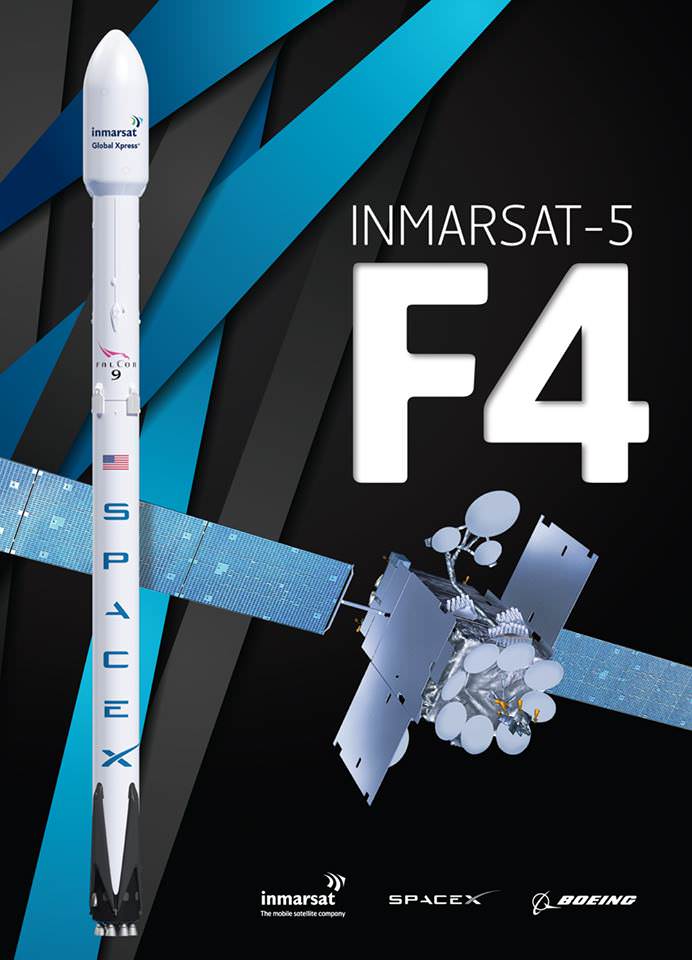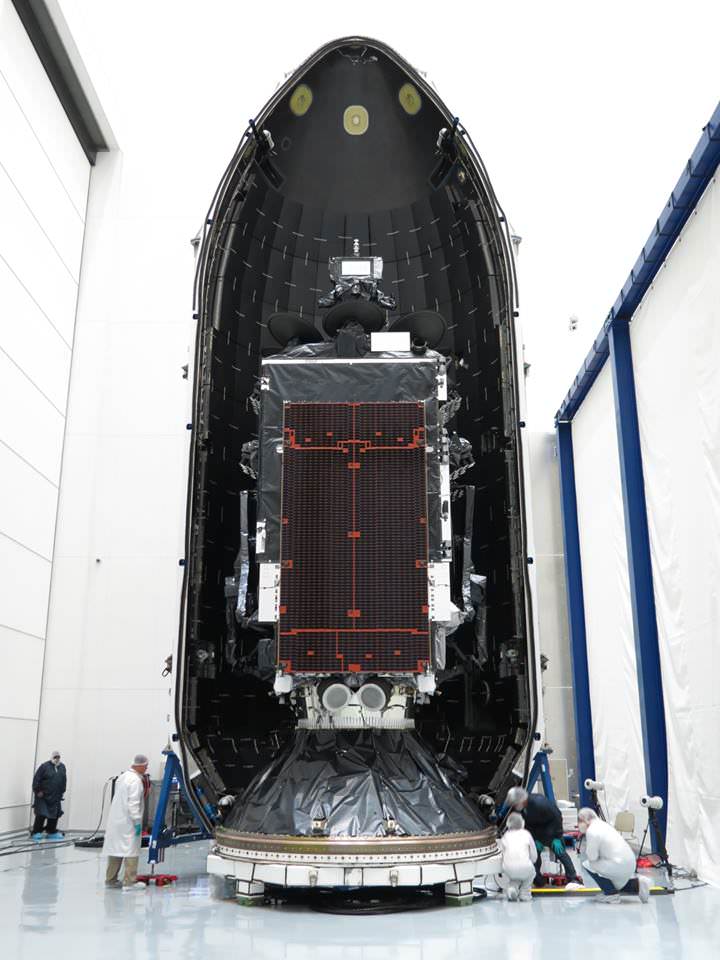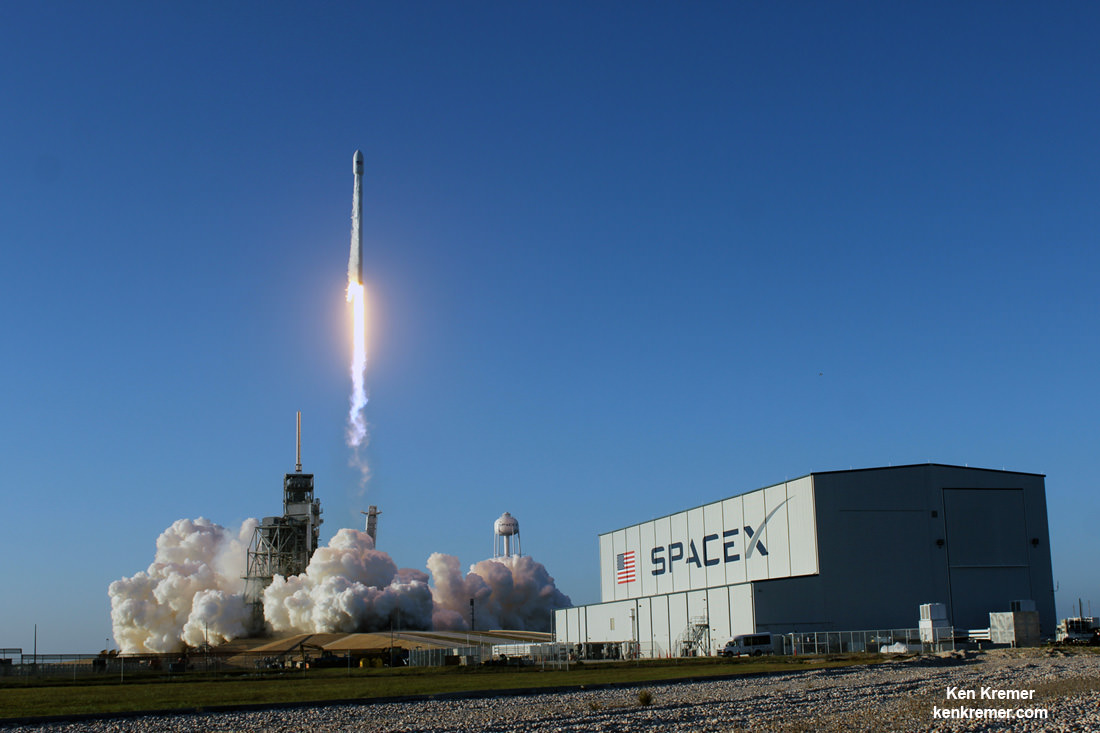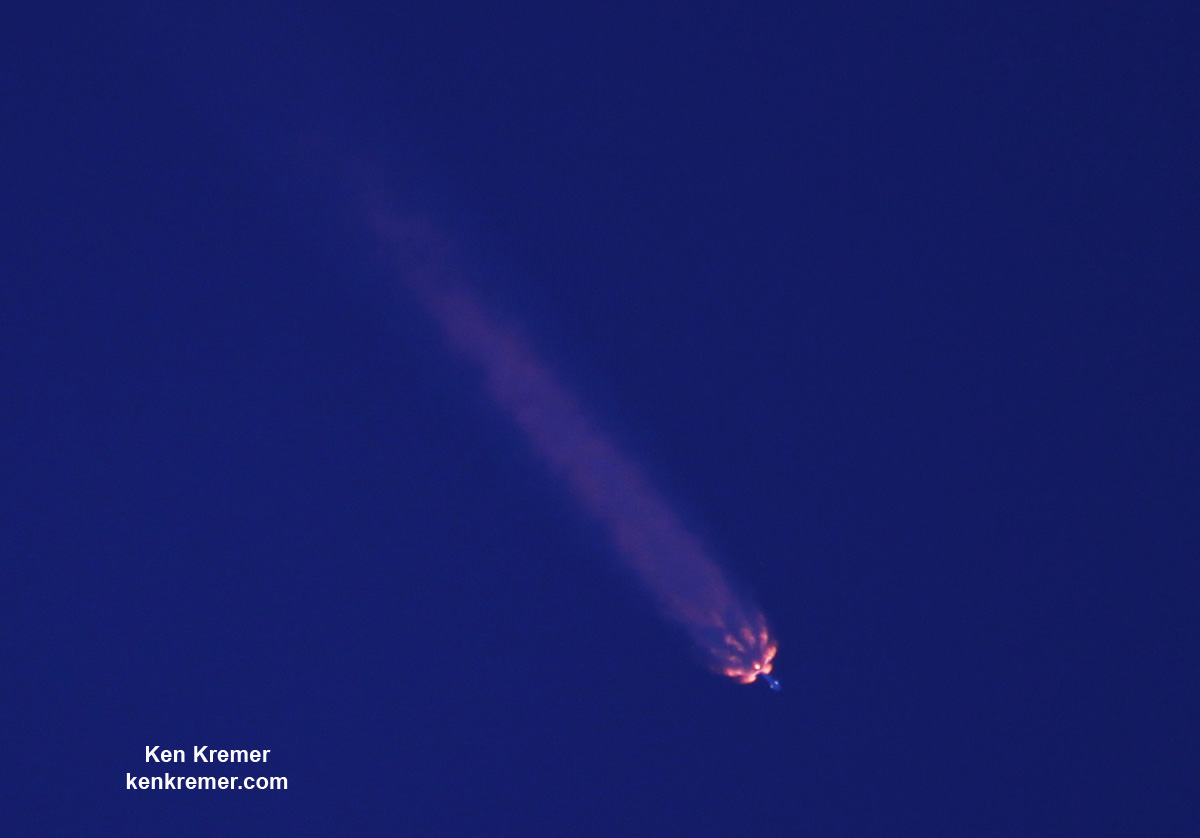
KENNEDY SPACE CENTER, FL – Following SpaceX’s “exceptional performance” launching an immensely powerful broadband satellite on their maiden mission for Inmarsat this week on a Falcon 9 rocket, the company CEO told Universe Today that Inmarsat was willing to conduct future launches with SpaceX – including on a “reusable rocket in the future!”
“This has obviously been an absolutely exceptional performance from SpaceX, Inmarsat CEO Rupert Pearce told Universe Today in a post launch interview at the Kennedy Space Center on Monday, May 15.
“They have now earned themselves an immensely loyal customer.”
SpaceX is the first and thus far only company in history to successfully recover and refly a previously flown orbit class ‘flight-proven’ liquid fueled first stage rocket – during the SES-10 launch in March 2017.
The twilight blastoff of the SpaceX Falcon 9 carrying the Inmarsat-5 Flight 4 communications satellite for commercial High-Speed mobile broadband provider Inmarsat occurred at 7:21 p.m. EDT (or 23:21 UTC) on Monday evening, May 15, from SpaceX’s seaside Launch Complex 39A on NASA’s Kennedy Space Center in Florida.
“They hit the ball out of the park with this launch for us,” Inmarsat CEO Pearce told me regarding the new space company founded by billionaire CEO Elon Musk.
The never before used 229-foot-tall (70-meter) SpaceX Falcon 9 successfully delivered the gigantic bus sized 6100 kg Inmarsat-5 F4 satellite to a Geostationary Transfer Orbit (GTO) under brilliant blue and nearly cloudless twilight skies from the Florida Space Coast. Read my launch report here.
The first stage is powered by nine Merlin 1 D engines fueled by RP-1 and liquid oxygen propellants and generating 1.7 million pounds.
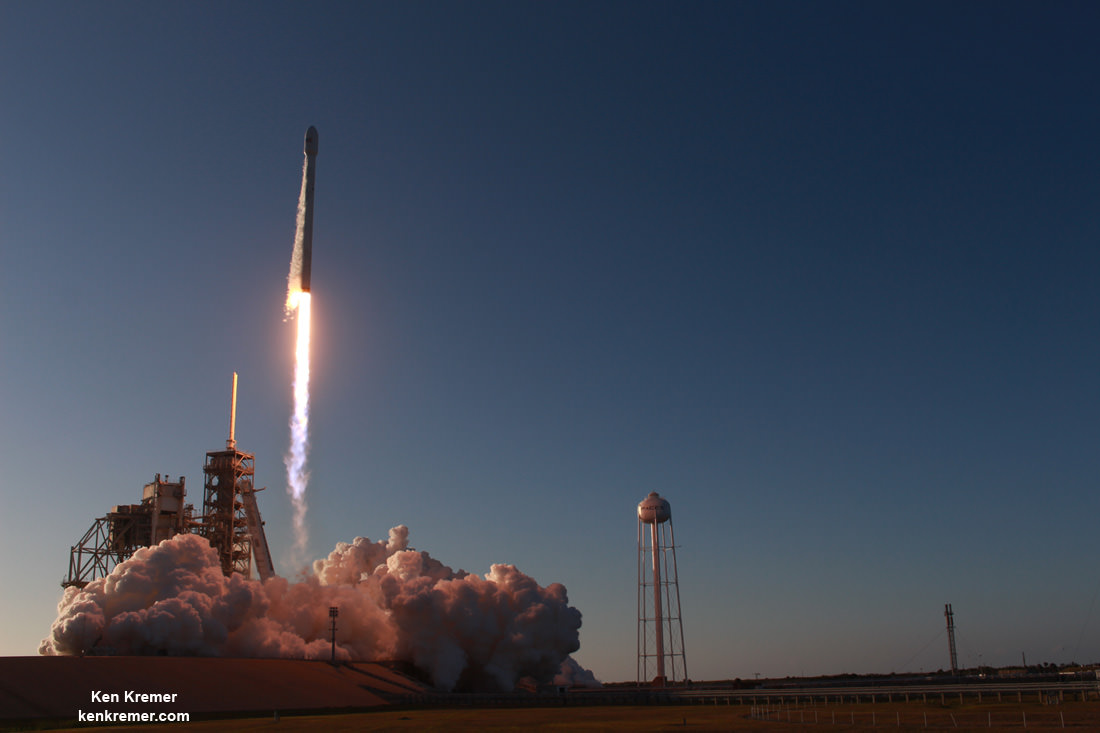
The Inmarsat-5 F4 satellite is designed to provide high speed broad band service to government, military, maritime and aviation users and ship and airplane customers numbering in the millions to tens of millions of customers now and potentially hundreds of millions of customers in the future. It was the heaviest payload ever launched by a Falcon 9.
Pearce says he “has every confidence in SpaceX.”
Inmarsat is a leading provider of mobile satellite communications, providing global connectivity more than 35 years – on land, at sea and in the air, says the firm.
I asked CEO Pearce; What does the future hold regarding further Inmarsat launches with SpaceX?
“They [SpaceX] have now just gained and earned themselves an immensely loyal customer [from Inmarsat], CEO Pearce replied.
“We will be looking to do further launches with them.”
The 7 meter long Inmarsat-5 F4 satellite was deployed approximately 32 minutes after Monday’s launch when it will come under the command of the Boeing and Inmarsat satellite operations teams based at the Boeing facility in El Segundo.
Would you consider a used rocket, a previously flown booster?
“I’m sure we will be using a ‘reused rocket’, Pearce stated. “And we will be launching on a ‘reusable rocket’ in the future.”
“We will be looking to support them in any way we can with their new innovation programs.”
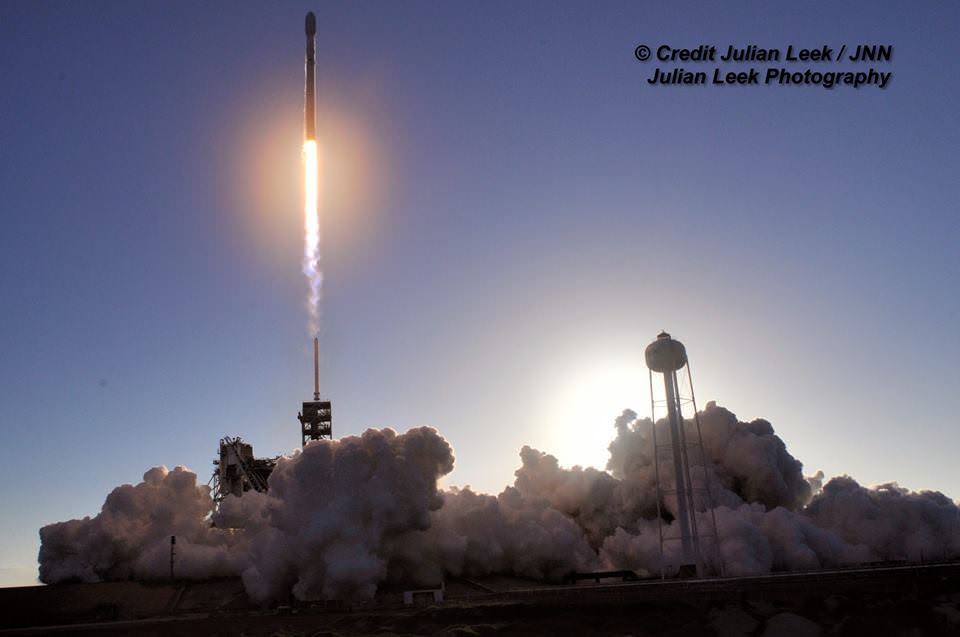
In contrast to virtually all Falcon 9 launches in the past 18 months, no attempt was made to recover the first stage booster.
For this launch there was basically no choice but to make the first stage ‘expendable’ because Inmarsat-5 F4 is heaviest ever payload launched on a Falcon 9.
The satellites heavy weight with a launch mass of approx. 6,100 kg (13,400 lbs) means the rocket needs all its thrust to get the satellite to orbit and thus precludes the chance to land the first stage at sea or land.
Thus there are no landing legs or grid gins attached to the skin of this Falcon 9.
“This rocket that went today was not reusable. That was just a creature of its time,” Pearce elaborated.
“We will stay at the cutting edge with SpaceX!”
To date, SpaceX has successfully recovered 10 first stage boosters either by land or by sea on an ocean going platform.
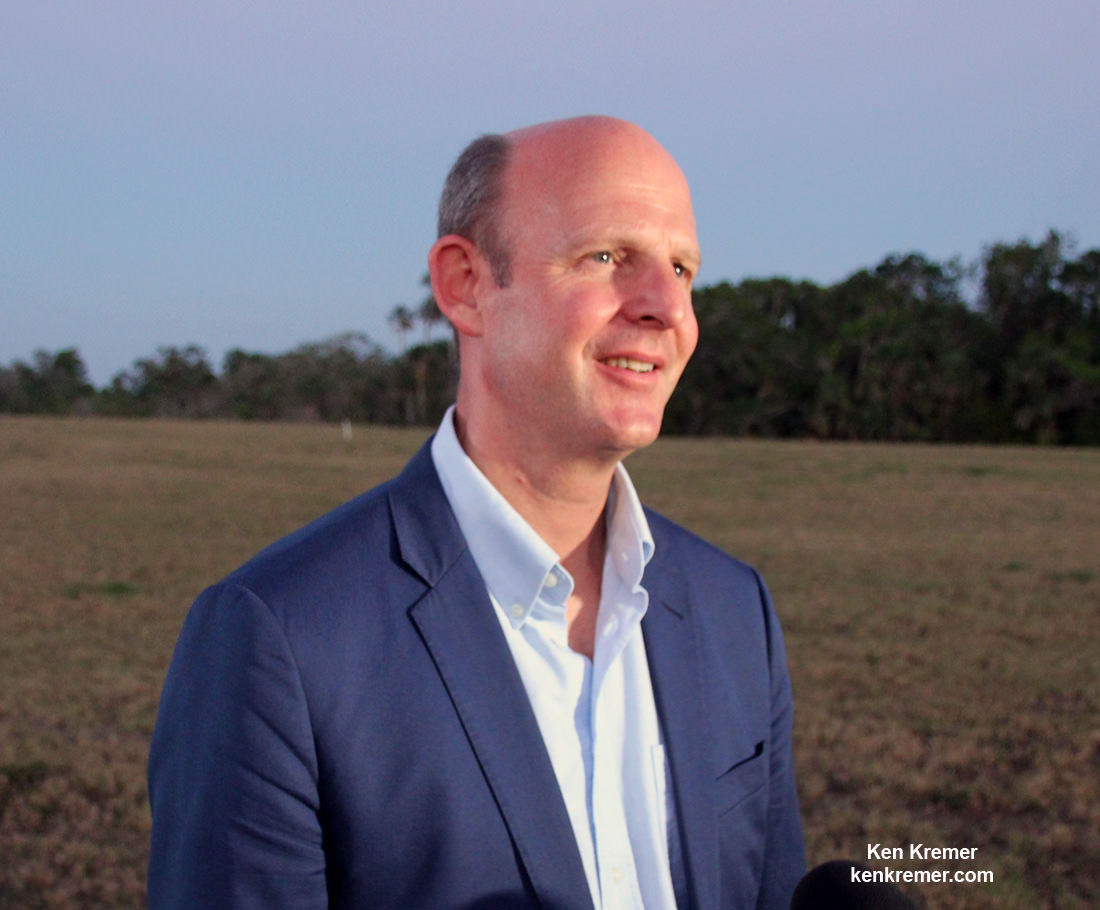
The Inmarsat-5 F4 (I-5 F4) will become part of the firms Global Xpress network “which has been delivering seamless, high-speed broadband connectivity across the world since December 2015,” says Inmarsat.
“Once in geostationary orbit, the satellite will provide additional capacity for Global Xpress users on land, at sea and in the air.”
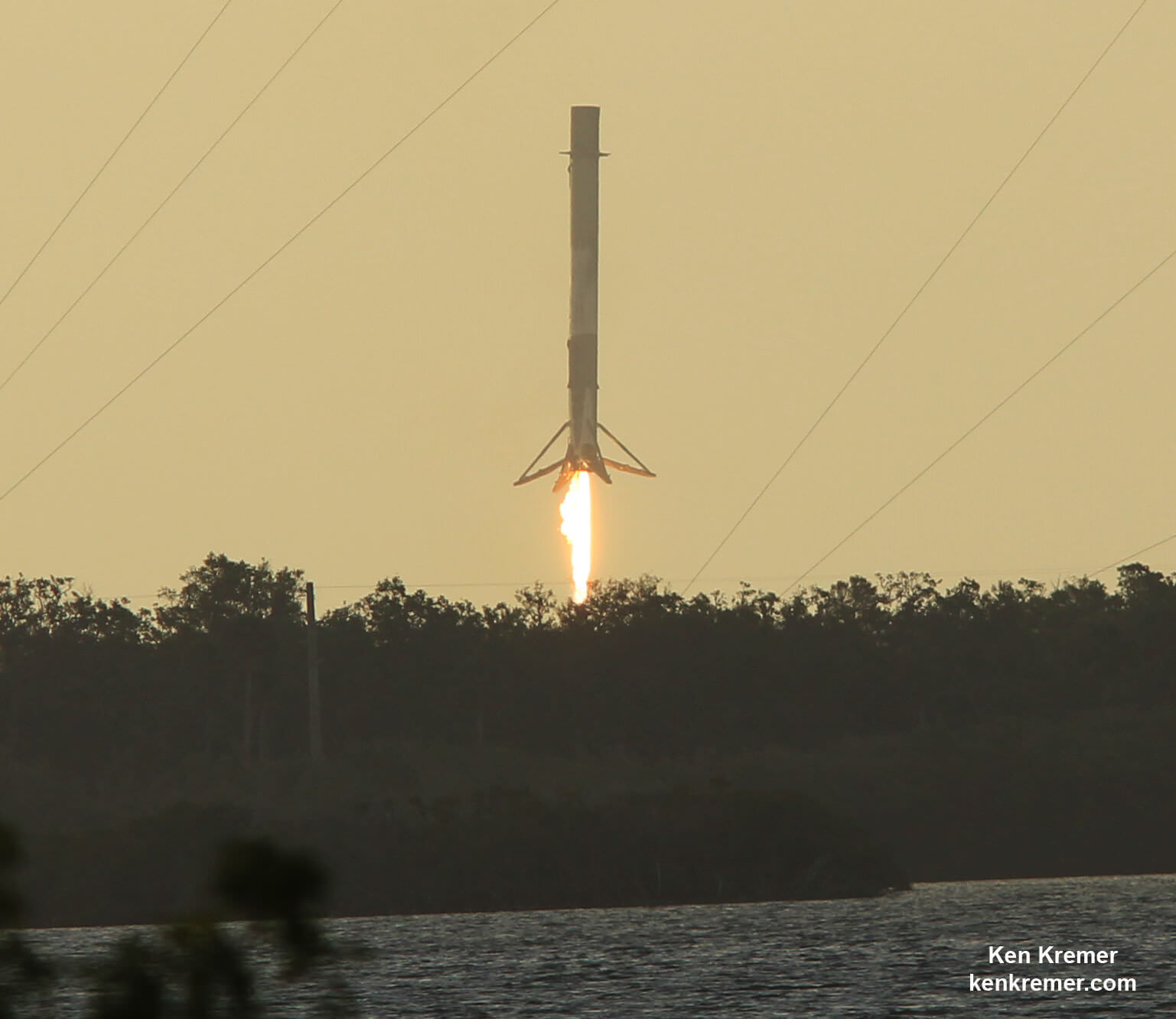
I-5 F4 was built by Boeing at their satellite operations facility in El Segundo, CA for Inmarsat.
The new satellite will join 3 others already in orbit.
Inmarsat has invested approximately US$1.6 billion in the Global Xpress constellation “to establish the first ever global Ka-band service from a single network operator.”
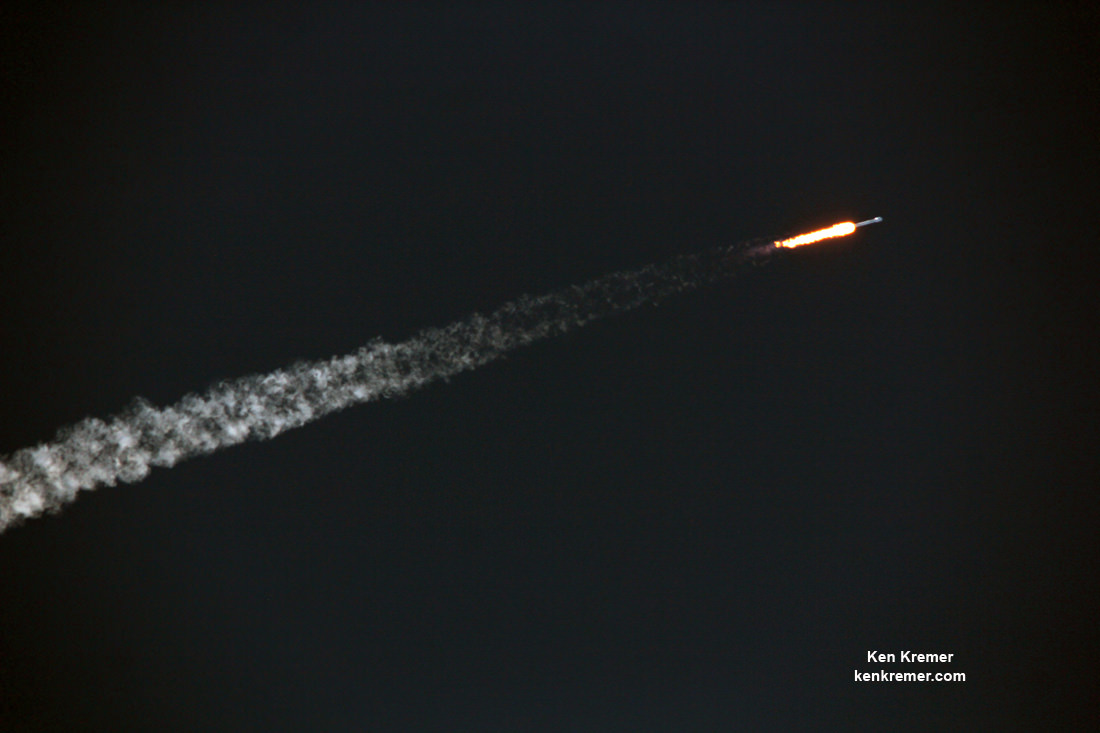
Inmarsat 5 F4 counts as the sixth SpaceX launch of 2017.
And SpaceX is on an absolutely torrid launch pace. Monday’s liftoff comes just 2 weeks after the last successful SpaceX Falcon 9 liftoff on May 1 of the super secret NROL-76 payload for the National Reconnaissance Office, or NRO – as I reported here.
Watch for Ken’s continuing onsite launch reports direct from the Kennedy Space Center and Cape Canaveral Air Force Station in Florida.
Stay tuned here for Ken’s continuing Earth and Planetary science and human spaceflight news.
